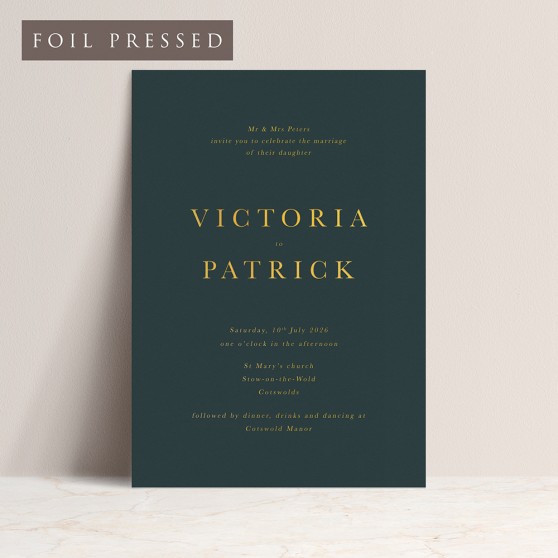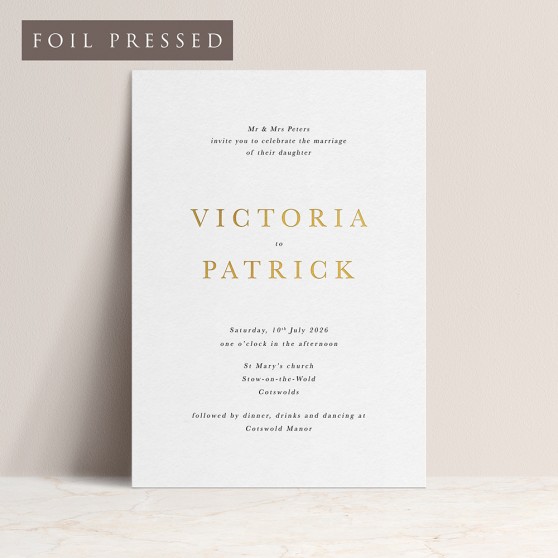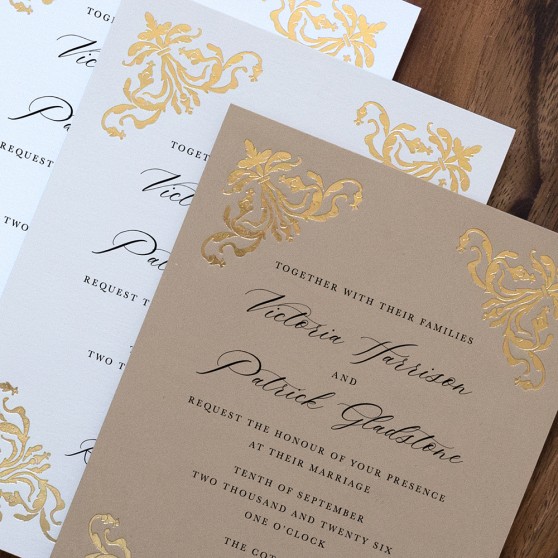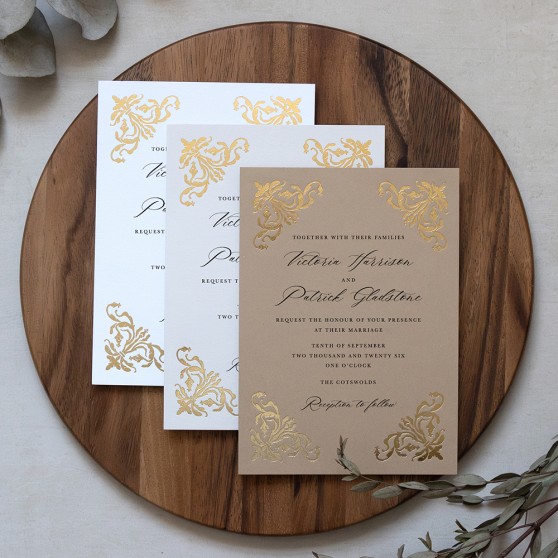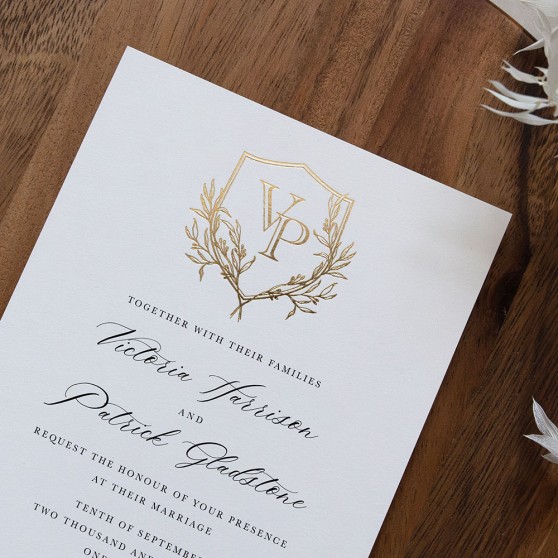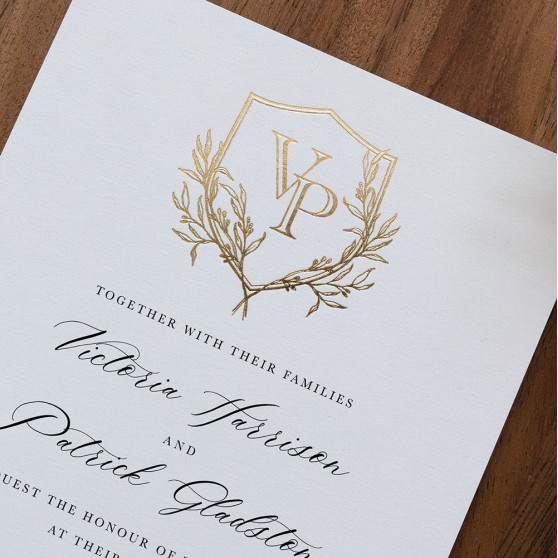What is Block Foiling / Hot Foiling?
Foil Blocking, Hot Foiling, or Hot Foil Stamping all refer to the same traditional, beautifully tactile printing method. Unlike digital foiling, this hands-on process creates a unique, high-end finish—perfect for luxurious wedding stationery.
Each card is individually hand-fed into a traditional foil press machine using specialist equipment. The result is a beautifully debossed, shiny metallic imprint with depth and texture. Historically used in the 19th century for book decoration, the technique remains beloved today for its elegant effect.
How It Works
We use a custom metal die with a reverse image of your design. This die is heated and pressed through a thin foil film onto your card. Heat activates the adhesive on the foil, while pressure bonds it to the surface—leaving a stunning, shiny imprint with a slight indentation.
This method works best on bold elements and is not ideal for delicate lines or large foil-filled areas.
Why Choose Traditional Hot Foiling?
Advantages:
-
Luxurious Finish with depth and texture
-
Works on Dark Card due to the opaque foil
-
Wide Range of Card Stocks and thicknesses
-
No White Edges, as foil is pressed directly onto coloured card
-
Timeless Style that never goes out of fashion
Disadvantages:
-
Higher Cost due to custom die setup
-
Labour-Intensive process
-
Not Editable once the block is created
Premium Card Stock & Duplexing
We use Colorplan card by G.F. Smith, one of the most respected paper makers in the world. Choose from 55 coloursand 10 thicknesses, all made in the UK with sustainable practices. The texture and depth of Colorplan make it ideal for both hot foil pressing and letterpress printing.
We also have our own duplexing machine, which allows us to bond two sheets of card together to create an ultra-thick, luxurious finish. This option gives your invitations extra weight and zero flop—perfect for a truly premium feel.
Common Questions
Can I Use a Design I've Created in Canva or Another Design Software?
Yes! If you've created your own wedding invitations using Canva or any other design tool and would love to elevate them with traditional hot foil pressing, we can help. Simply send us your design, and we’ll check that it’s suitable for foil stamping. We’ll work with you to make sure everything is set up correctly and then foil it onto your chosen professional card stock—so your DIY design still has that professional finish.
Can I Order a Sample?
Yes! We offer hot foil invitation samples so you can experience the finish firsthand. Samples are not customised—click the listing link or ask us directly.
Can I Use a Custom Design?
Absolutely. If you have a design in mind or something you’ve seen elsewhere, we’re happy to advise and bring it to life with hot foiling.
Can You Reprint Later?
Yes. Once your custom die is made, it can typically be used again. Contact us for reprint options.
Is Block Foiling the Same as Embossing?
Not quite. Embossing uses two custom plates to press the design into the card—without foil. Block foiling uses one metal die with heat and foil to create a shiny, indented finish.
What Is Letterpress?
Letterpress uses a custom die and ink (not foil). The result is an inked, slightly textured impression. This is not something we currently offer at Vintage Prints.
Digital Foiling vs. Traditional Hot Foiling
What Is Digital Foiling?
A design is printed in black toner, then passed through a foil machine where the foil adheres to the toner. The result is flat and sits on the surface—no indentation or block needed.
Pros of Digital Foiling:
-
Budget-Friendly and quicker to produce
-
No Die Costs
-
Great for Short Runs & Personalisation
-
Available on Smooth Card Stocks
Cons of Digital Foiling:
-
Flat Finish without tactile depth
-
Limited Card Options (only smooth stocks)
-
Not Ideal for Fine Detail or Solid Colours
Summary
If you want that luxurious, tactile finish, hot foil pressing is truly unmatched—especially for larger quantities. If you're working with a tighter budget but still want a touch of shine, digital foiling is a brilliant alternative.
Still unsure which is right for you? Just get in touch—we’re happy to help!



